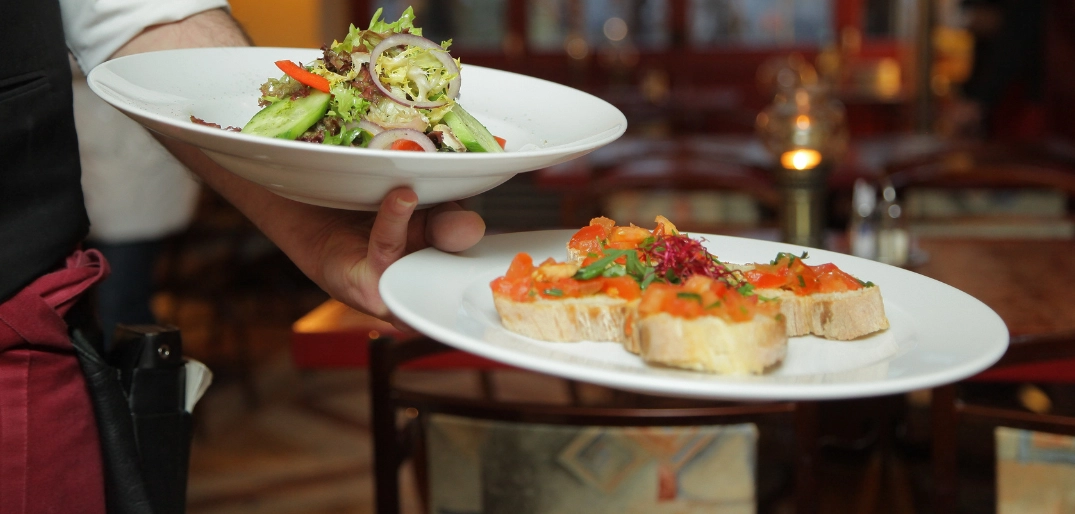


The best strategy to sell more in your restaurant
The most efficient tactics
Two of the most important strategies to increase sales at food and beverage venues are up-selling and cross-selling.
These two strategies have a similar goal of increasing sales by providing added value to customers. When executed properly, they can change customer buying behaviours, resulting in increased average spend and overall revenue.
But what exactly is up-selling and cross-selling and how can I use it to help me run my business?
Cross-selling
Cross-selling is a technique that encourages customers to purchase add ons that will compliment what the customer has purchased already. The items that are used for cross-selling are often items that the customer would have purchased anyway. The goal here is to recommend the right items at the right time.
Upselling
Upselling is a sales technique aimed at persuading customers to purchase a more expensive, upgraded or premium version of the chosen item or other add-ons for the purpose of making a larger sale.

The different between the two
The purpose of up-selling is to persuade customers to buy more expensive versions of the product. For example, if a customer orders a burger with small chips, the up-sell would be persuading them to order medium sized chips. On the other hand, cross-selling aims to make tailored recommendations of items that will accompany the dish that has already been ordered. For example, if a customer buys chicken wings, the cross-sell may be a beer.
Top tips
- Be subtle in how you offer the up-sell or cross-sell. Bombarding your clients with suggestions will only annoy them and will most likely not incentivise them to order more.
- Make the up-sells and cross-sells personalised and relevant. For example, you would not want to cross-sell alcohol to a minor or up-sell a product with meat to a vegetarian. For up-selling and cross-selling to work, you need to know about your audience.
- Give your customers a sense of urgency. If your product is only available at certain periods of time or there is limited stock, you should let your customers know as this will motivate them to purchase. This can be done with the press of a button when using a digital menu.
- Identify your high profit margin items and push those that will make you the most. It is your goal to suggest menu items that have the best profit margins. This will help you increase average bill values and overall profitability.
- Push your items at the right times. For example, it will be more effective to up-sell eggs benedict during brunch hours rather than at dinner.
- Guests want to feel like they are getting good value if they are going to increase the size of their order or add other items to their order. A good rule of thumb is not to surpass 25% of the cost of the original product being ordered.
When it goes wrong
In order to use an effective up-selling and cross-selling strategy it’s important to understand when they fail in order to avoid these pitfalls.
Human error
Your waiter is currently most likely your main way to up-sell and cross-sell. But it’s very possible that either they or the customer is having a bad day which could reflect badly on the interaction. A waiter suggesting products the customer doesn’t want may also seem pushy and be unpleasant for the customer.
Managing customers well is no easy task. Once the waiter makes a mistake, the customer experience goes down. Once a mistake is made, customers usually reject suggestions in order to avoid awkward interactions. A digital menu is a great tool which clearly gets your options across and lets the customer browse them at their own pace.
Lack of personalisation
Another main reason why cross-selling and up-selling fails is that what is being offered doesn’t appeal to what the customer is looking for. Offering something generic like a drink with the meal isn’t going to create a lot of interest from your customers. Be specific. Say what drink would balance the dish or what side will pair nicely. Having a system to track your customers order history is a very powerful tool.
Many restaurants are sitting on a gold mine of data that can be used to optimise marketing campaigns and skyrocket ROI. Real-time data analytics, is a game changer for the hospitality industry, reducing costs, generating new revenue, and scaling up operations. Do you have a returning customer that has a sweet tooth? Make sure to offer a sugary cocktail or their favourite dessert with their meal .
Conclusion
A lot of planning, organisation, thought and maintenance has to go into designing a successful up-selling and cross-selling campaign. Businesses in the hospitality sector are already overwhelmed by the amount of essential day to day tasks they already have to deal with.
In order to set up side projects such as customer tracking, cross-selling and up-selling strategies or marketing campaigns it’s crucial you have the right tools. They will significantly help save time and tracking of results which can in turn, further help revenue.
Pick & Pay provides businesses with the tools you need to kick off these projects and increase revenues. You can explore our available options here.


